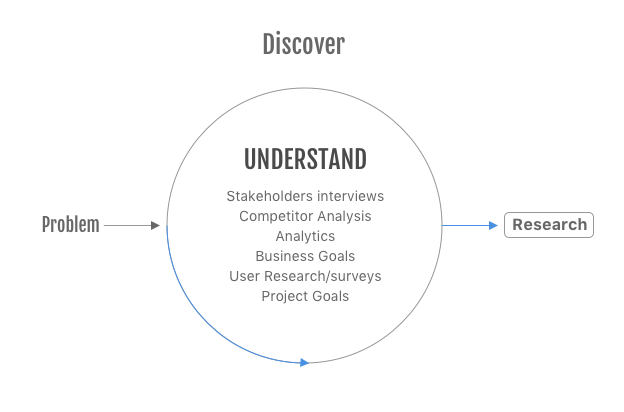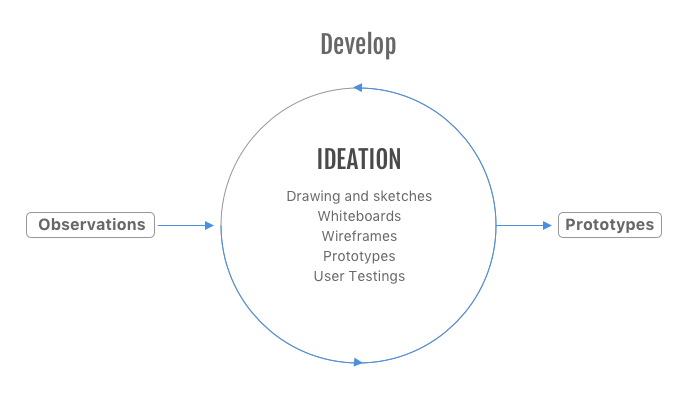"I believe empathy is the key that unlocks our understanding of the user and their behavior and serves as the foundation for meaningful design solutions."
A few things I’ve learned as a designer is the importance of being adaptable and flexible, open to changing methods and points of view to accommodate the needs of the project as well as improve efficiency.
Selecting the right approach at the beginning is crucial to the success of the product.

DISCOVER
My first step is to learn about the problem and understand who the user is.
I’ll lead and facilitate interviews with stakeholders to answer the most critical questions such as:
WHAT is the business goal?
HOW are the success and failure of this product being measured
WHO will be using this product?
Having the answers to these questions ensures a successful start to the project by verifying that there is a problem to be solved and getting a high-level view of how a potential solution can come together.
User research should follow these interviews as it helps to have the foundation to structure the project. The study revolves around user motivation and goals.

DEFINE
My focus in this phase is analyzing the data and gathering information during the discovery to turn them into useful observations. I’ll generate navigation structures, map user journeys, create personas to represent significant user groups encountered during the research, and locate pain points, feature maps, and flows. The data should focus on finding user goals and translate them into tasks that can give us the functions of the product. This flow will help me to be confident that the design meets the user's needs.
Some of the expected or possible deliverables from this phase include concept models, sitemaps, user tasks flows, user profiles, user journeys, and user stories. At the end of this phase,
the needs of the user and business should be clearly defined along with any limitations.

IDEATE
This phase is initially focused on quick sketches and my favorite exercise, whiteboarding. These rapid methods of ideation help to help keep things loose and let creativity and imagination take center stage.
Once we are clear about the task flows, sketches turn into wireframes. These then can be delivered to visual designers to be converted. Iteration begins over and over again until each option has been adequately considered and evaluated.
Creating rapid and interactive prototypes is key to this process. Doing this will give us valuable feedback through user testing. Prototypes can range from simple drawings to interactive live mockups using front-end development.

IMPLEMENT
Once we have the interactions and interfaces mocked up, development can start. Designers and developers should be very involved at this stage. Sharp lines of communication have to be maintained between them by having frequent conversations.
Finally, for the design validation, we’ll use analytics tools to track how the user interacts with the product as well as pinpoint what additional steps could be taken to improve the product. Once actionable insights have been gained, improvements can be made